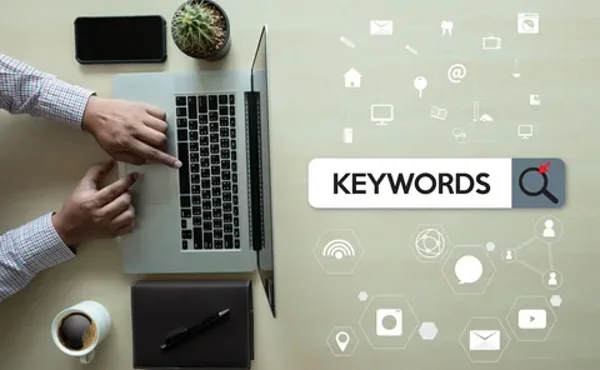 (1).webp)
In today's digital age, where consumers are bombarded with countless messages every day, generic content often gets lost in the noise. To truly stand out and engage your audience, personalization has become essential. Tailoring your content to the preferences, behaviors, and needs of individual audiences can significantly enhance engagement, drive conversions, and foster long-term loyalty. In this comprehensive guide, we'll delve into the intricacies of content personalization, exploring various strategies and techniques to help you connect with your audience on a deeper level.
Benefits of Content Personalization
Personalizing content offers a multitude of benefits for businesses striving to make a meaningful impact in the digital landscape.
By delivering tailored experiences, you can
1. Enhance Relevance: Personalized content resonates more strongly with audiences as it directly addresses their interests, preferences, and pain points.
2. Increase Engagement: When content speaks directly to the individual, it captures attention and encourages interaction, leading to higher levels of engagement.
3. Drive Conversions: Personalized recommendations and messaging can guide prospects through the buyer's journey more effectively, resulting in increased conversion rates.
4. Foster Brand Loyalty: By demonstrating a deep understanding of your audience and consistently delivering valuable, relevant content, you can cultivate stronger relationships and foster brand loyalty.
Techniques for Personalizing Content
Effective content personalization relies on a combination of techniques and strategies designed to tailor messaging to the unique characteristics of individual users.
Here are some key techniques to consider
1. Segmentation: Divide your audience into distinct segments based on demographics, behaviors, or preferences to deliver targeted content that resonates with each group.
2. Behavioral Targeting: Analyze user behaviors, such as browsing history, purchase patterns, and engagement metrics, to predict preferences and deliver personalized recommendations.
3. Content Recommendations: Use algorithms to suggest relevant content based on users' past interactions, preferences, and similarities to other users.
4. Dynamic Content: Customize content in real-time based on user actions, preferences, or location to create a personalized experience that adapts to each individual.
Understanding Your Audience
A crucial aspect of content personalization is gaining a deep understanding of your audience's preferences, interests, and pain points.
Here are some strategies to help you better understand your audience
1. Conduct Audience Research: Use surveys, interviews, and analytics tools to gather insights into your audience's demographics, interests, and behaviors.
2. Analyze Data: Dive into data from various sources, including website analytics, social media metrics, and customer feedback, to identify patterns and trends.
3. Create Buyer Personas: Develop detailed profiles of your ideal customers, including their demographics, goals, challenges, and preferred content formats.
4. Monitor Feedback: Pay attention to feedback from your audience, whether it's through social media comments, customer reviews, or direct messages, to understand their needs and preferences.
Dynamic Content Customization
Dynamic content customization involves tailoring content in real-time based on user interactions, preferences, or contextual factors.
Here's how you can implement dynamic content customization
1. Personalized Recommendations: Display product recommendations, content suggestions, or next-best-actions based on user behavior and preferences.
2. Contextual Messaging: Serve content that is relevant to the user's current context, such as their location, device type, or time of day.
3. A/B Testing: Experiment with different versions of content and dynamically serve the most effective variation based on user responses and engagement metrics.
4. User Journey Mapping: Map out the user journey and dynamically adjust content at each touchpoint to guide users towards conversion.
Utilizing AI and Machine Learning for Personalization
Artificial intelligence (AI) and machine learning (ML) technologies have revolutionized content personalization by enabling businesses to analyze vast amounts of data and deliver highly tailored experiences at scale.
Here's how you can leverage AI and ML for personalization
1. Predictive Analytics: Use predictive models to anticipate user behavior and preferences, allowing you to proactively personalize content and recommendations.
2. Natural Language Processing (NLP): Analyze and understand user-generated content, such as social media posts or product reviews, to extract valuable insights and personalize recommendations.
3. Content Generation: Generate personalized content, such as product descriptions or email subject lines, using AI-powered tools that analyze user data and preferences.
4. Automated Personalization: Implement automated personalization algorithms that continuously learn from user interactions and adjust content delivery in real-time.
Behavioral Triggers and Contextual Personalization
Behavioral triggers and contextual personalization involve delivering content based on specific user actions, behaviors, or situational factors.
Here are some examples of how you can leverage behavioral triggers and contextual personalization
1. Abandoned Cart Emails: Send personalized emails to users who have abandoned their shopping carts, featuring recommended products or exclusive offers to encourage completion of the purchase.
2. In-App Messages: Display targeted messages or notifications within your app based on user behavior, such as prompting users to complete a profile or inviting them to engage with new features.
3. Location-Based Offers: Send location-based offers or promotions to users when they are near a physical store or in a specific geographic area, leveraging GPS data to personalize the message.
4. Event-Based Triggers: Trigger personalized content or messages based on specific events or milestones in the user's journey, such as a birthday or anniversary.
Implementing Personalization in Various Channels
Effective content personalization extends across multiple channels and touchpoints, ensuring a cohesive and seamless experience for users.
Here's how you can implement personalization in various channels:
1. Website Personalization: Customize website content, navigation, and messaging based on user preferences, behaviors, and past interactions.
2. Email Personalization: Personalize email content, subject lines, and offers based on user demographics, behaviors, and purchase history to maximize engagement and conversions.
3. Social Media Personalization: Tailor social media content, ads, and promotions to specific audience segments, interests, and preferences to drive engagement and brand loyalty.
4. Mobile Personalization: Create personalized experiences within mobile apps, such as personalized recommendations, in-app messages, and dynamic content based on user behavior and preferences.
Conclusion
In today's hyper-connected world, generic, one-size-fits-all content no longer suffices. To truly engage and connect with your audience, personalization is key. By implementing advanced techniques such as segmentation, dynamic content customization, and leveraging AI and machine learning, you can deliver highly tailored experiences that resonate with individual users. Understanding your audience's preferences, behaviors, and needs is essential for effective personalization, allowing you to drive engagement, foster loyalty, and ultimately, achieve your business objectives.
Ready to take your content personalization efforts to the next level? Get in touch with us today to learn how our advanced personalization solutions can help you create impactful, engaging experiences for your audience. Let's work together to tailor strategies that resonate with your individual audiences and drive tangible results for your business.
What to read next

